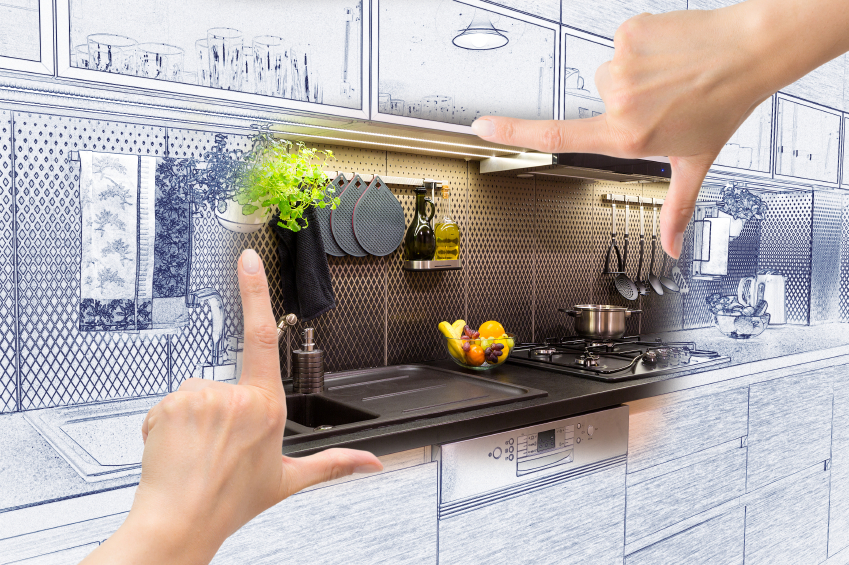7 Tips for Better Interior Listing Photos
March 08 2016
 If an attractive primary exterior photo is what first draws prospects to click on your listing, your interior shots are what really sells the home. These are the photos that show potential buyers where they could be living--the kitchen that could be theirs, the bedrooms that their kids could grow up in.
If an attractive primary exterior photo is what first draws prospects to click on your listing, your interior shots are what really sells the home. These are the photos that show potential buyers where they could be living--the kitchen that could be theirs, the bedrooms that their kids could grow up in.
Interior photos can be tricky to master, however, and it's easy to drive property searchers away with images that are too dark or poorly composed. To help you make the most of your inside shots, we've rounded up a bunch of tips for capturing photos that buyers will love.
1. Be mindful of lighting
Psychologically speaking, people are more attracted to light images than dark ones, so it's important to get your lighting right. One of the biggest causes of too dark photos are windows that are too bright or "blown out" and make the rest of the room look dark by contrast.
To avoid blown out windows, be mindful of the time of day you're shooting. Shooting in early morning light or during the "golden hour" before sunset is ideal, as the soft light of that time more closely resembles interior lighting. You can also aim to shoot on overcast days to mitigate the effects of a too-bright sun. For more on lighting, see this article.
2. Shoot in RAW
The file format that your camera captures images in is important, especially when dealing with interiors. Most point and shoot cameras take photos as JPGs. If you have a higher end camera, like a DSLR, change your settings so that you're shooting photos as RAW files.
Why? RAW files are what's called "lossless." That means when you edit or save a file, no data is lost. JPG files, on the other hand, are "lossy" files that use a form of compression that discards a little bit of data with every save. Because no data is lost in RAW files, images shot in this format have more visual information in them. This means that even if some of your photos did turn out dark, the RAW file should have enough data in it that you can lighten the photo during editing to reveal the details of a room. Those details may not be there when shooting in JPG.
There's one caveat when working with RAW files: they take up a lot more space than JPGs, so be sure you use a high capacity memory card when shooting. (A backup wouldn't hurt, either.)
3. Use a tripod
Because interiors are darker than exteriors, your camera's shutter speed will be slower. This makes your images vulnerable to blurring from excess movement. To minimize movement, use a tripod to take your photos, rather than just holding your camera.
To prevent camera shake even further, consider getting a remote shutter release to prevent jarring when you press the shutter button. If that's something you don't want to deal with, use your camera's timer mechanism to take photos. That way, you can set up the shot, hit the shutter button, and then the camera will have a couple extra seconds to become still before triggering.
4. Avoid the middle of a room
You want to capture the entirety of the room, not just part of it. That means shooting from the corner of a room, or even through a doorway for smaller rooms. There's pretty much never a time when shooting from the middle of a room is a good idea.
5. Glass: Handle with care
The last thing a buyer wants to see in listing photos is you, so make sure you're not accidentally visible in mirrors. This can be tricky in areas like bathrooms where mirrors are prominent, so you may have to experiment with using different angles to make sure you don't capture your reflection.
Similarly, if you're using a flash (consider turning on all the lights instead), be careful it reflecting in mirrors and in other glass or shiny surfaces.
6. Don't tilt your camera
We can't emphasize this enough--make sure your camera is always straight up-and-down vertically. Don't angle it up or down, as this will distort the lines in your image. If you want to capture an image from a higher or lower place, that's fine. Just don't tilt your camera to do it! Stand on a chair or other object if you must... just be sure to keep your camera flat on the vertical plane.
If you find that you're having trouble fitting all of the room in, consider getting a wider angle lens. In the meantime, shoot into the corner to make a space look bigger, or remove excess furniture to open a space up.
7. Stay sharp
Buyers want to see all the details of a home, so make sure your shots are sharply focused on parts of the room that are both near and far. This means using a small aperture with a higher f-stop number for a greater depth of field.
Wrapping up
Even if you're a wizard with the technical side of photography, your images are greatly affected by how well the property was prepared for the shoot beforehand. It's important that your sellers clean their home, remove clutter, and are prepared for you to possibly move furniture in order to get the best shot. Make sure you have this conversation well in advance of your photography appointment.
